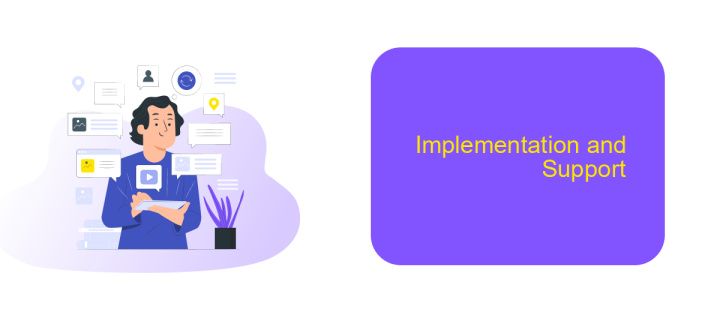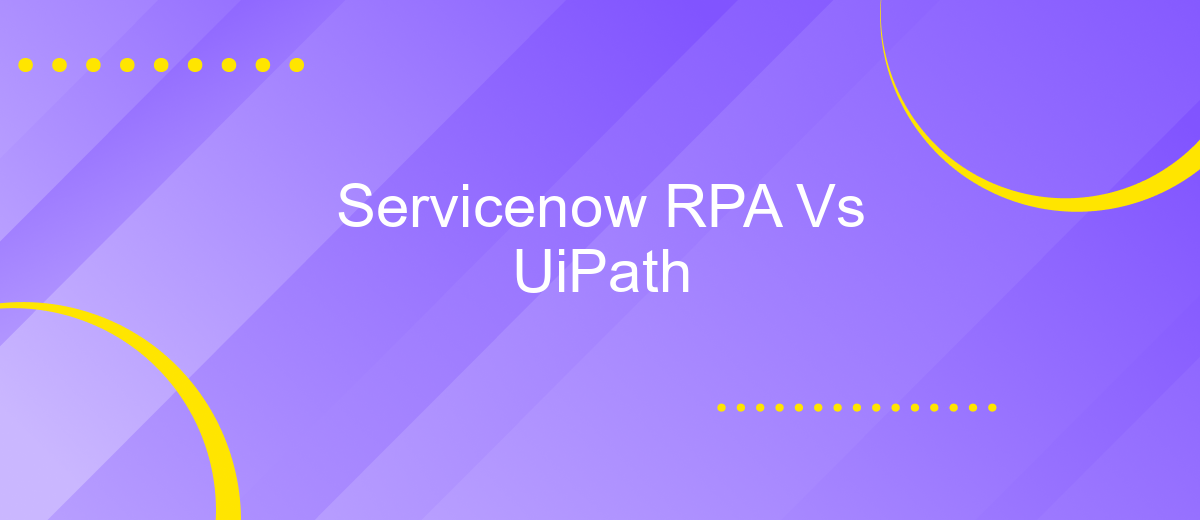Servicenow RPA Vs UiPath
In the rapidly evolving landscape of automation, choosing the right Robotic Process Automation (RPA) tool is crucial for business efficiency. This article delves into a comparative analysis of two leading RPA platforms: ServiceNow RPA and UiPath. By examining their features, capabilities, and unique advantages, we aim to provide insights that will help organizations make an informed decision.
Introduction
In the rapidly evolving world of automation, two prominent players stand out: ServiceNow RPA and UiPath. Both platforms offer robust solutions for automating repetitive tasks and streamlining business processes, yet they cater to different needs and preferences. As organizations strive to enhance efficiency and reduce operational costs, choosing the right RPA tool becomes crucial.
- ServiceNow RPA: Known for its seamless integration with the ServiceNow ecosystem, this tool excels in IT service management and enterprise automation.
- UiPath: A versatile and user-friendly platform, UiPath is renowned for its extensive capabilities in automating a wide range of business processes across various industries.
Understanding the differences between ServiceNow RPA and UiPath can help businesses make informed decisions. Additionally, leveraging integration services like ApiX-Drive can further enhance the capabilities of these RPA tools by enabling smooth data flow between various applications and systems. This ensures a more cohesive and efficient automation strategy, ultimately driving better outcomes for organizations.
Features and Functionality

ServiceNow RPA and UiPath offer robust features and functionalities tailored to streamline business processes through automation. ServiceNow RPA integrates seamlessly within the ServiceNow platform, offering a unified interface for managing workflows, automating repetitive tasks, and enhancing operational efficiency. Its native integration capabilities facilitate smooth connectivity with other enterprise applications, ensuring a cohesive automation strategy. Moreover, ServiceNow RPA's AI-driven analytics provide insightful metrics to optimize performance continuously.
On the other hand, UiPath stands out with its extensive library of pre-built automation components and a user-friendly drag-and-drop interface, making it accessible for both technical and non-technical users. UiPath's advanced capabilities, such as AI and machine learning integration, enable more sophisticated automation scenarios. Additionally, UiPath supports a wide range of integrations, including third-party services like ApiX-Drive, which simplifies the process of connecting various applications and automating data workflows. This flexibility allows businesses to tailor their automation solutions to specific needs, ensuring maximum efficiency and scalability.
Pricing and Licensing

When evaluating the pricing and licensing of ServiceNow RPA and UiPath, it's essential to consider the different models and flexibility each platform offers. Both platforms provide scalable solutions, but their cost structures can vary significantly based on the needs of your organization.
- ServiceNow RPA: ServiceNow typically offers a subscription-based pricing model. The cost is often determined by the number of bots and the complexity of the workflows. Additional fees may apply for premium features and integrations.
- UiPath: UiPath also uses a subscription-based model but offers more granular pricing options. Customers can choose between different tiers, such as Community, Enterprise, and Cloud, each with varying levels of functionality and support. Licensing can be based on the number of robots, users, or by consumption.
Both platforms offer robust integration capabilities. For instance, ApiX-Drive can be utilized to streamline the integration process, allowing for seamless data flow between different systems and enhancing overall efficiency. Ultimately, the choice between ServiceNow RPA and UiPath will depend on your specific requirements and budget constraints.
Implementation and Support

Implementing and supporting RPA solutions in ServiceNow and UiPath requires a clear strategy and a well-defined process. ServiceNow RPA offers a seamless integration with its platform, making it easier for organizations already using ServiceNow to adopt RPA. On the other hand, UiPath provides a robust and flexible framework that can be integrated with various third-party applications and systems.
Both platforms require careful planning and execution to ensure successful implementation. ServiceNow RPA benefits from the platform's native capabilities, while UiPath's broad range of connectors and integrations, such as those offered by ApiX-Drive, facilitate smooth data flow between different systems.
- ServiceNow RPA: Seamless integration with ServiceNow platform, easy to adopt for existing users.
- UiPath: Flexible framework, extensive third-party integrations, supports complex automation scenarios.
- ApiX-Drive: Facilitates integration between UiPath and various applications, enhancing data connectivity.
Support for these RPA solutions includes regular updates, troubleshooting, and user training. ServiceNow provides support through its existing customer service channels, while UiPath offers comprehensive support including community forums, extensive documentation, and dedicated customer service. Both platforms ensure continuous improvement and adaptation to evolving business needs.
Conclusion
In conclusion, both ServiceNow RPA and UiPath offer robust solutions for automating business processes, yet they cater to slightly different needs. ServiceNow RPA excels in environments where seamless integration with IT service management and other enterprise applications is crucial. It provides a unified platform that can streamline workflows and enhance operational efficiency within the ServiceNow ecosystem. On the other hand, UiPath stands out for its versatility and extensive capabilities in automating a wide range of tasks across various industries. Its user-friendly interface and strong community support make it a popular choice for businesses looking to implement RPA quickly and effectively.
When deciding between ServiceNow RPA and UiPath, organizations should consider their specific requirements, existing infrastructure, and long-term automation goals. For companies seeking to integrate multiple applications and services, tools like ApiX-Drive can offer valuable assistance by simplifying the setup and management of integrations. Ultimately, the choice between ServiceNow RPA and UiPath will depend on the unique needs and strategic objectives of the organization, ensuring that the selected solution aligns with their automation roadmap.
- Automate the work of an online store or landing
- Empower through integration
- Don't spend money on programmers and integrators
- Save time by automating routine tasks
FAQ
What is the primary difference between ServiceNow RPA and UiPath?
Can ServiceNow RPA and UiPath be used together?
Which platform is easier to use for a beginner?
How do I decide which platform to use for my automation needs?
What are some options for integrating these RPA tools with other applications?
Apix-Drive is a universal tool that will quickly streamline any workflow, freeing you from routine and possible financial losses. Try ApiX-Drive in action and see how useful it is for you personally. In the meantime, when you are setting up connections between systems, think about where you are investing your free time, because now you will have much more of it.


